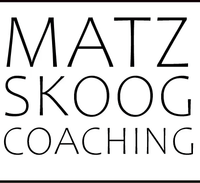Think and Grow Rich is one of the most recommended books for people who are into personal development. It was written by Napoleon Hill at the commission of Andrew Carnegie and based on interviews of 500 of those who history now remembers as some of the greatest American minds of the early 20th century, including Henry Ford, J.P. Morgan, John D. Rockefeller, Alexander Graham Bell, Thomas Edison, Theodore Roosevelt, Wilbur Wright, and W. Howard Taft. It was first published in 1937 and has now sold more than 70 million copies, giving it the distinction of being the all-time bestseller in the personal success category. Given the pedigree of those on whose advice this book was based, as well as those in today’s age who have recommended the book, it is fair to assume it contains valuable information that we can learn from. If some of the advice seems a little “out there,” or a little too intangible to be useful, remember whom it’s coming from, and suspend judgment until you’ve tested it for yourself. But it stands to reason that uncommon success must come from uncommon thoughts and actions. I must hasten to admit that what follows is not my own work. Unfortunately I do not know who the original author is, but I am hoping he or she will not mind that I share this with you.
1. Desire: The Starting Point of All Achievement
It may be stating the obvious, but growing rich starts with the desire to do so. The desire discussed here is not simply wishing, but is an intense, burning obsession, which must be coupled with both a plan and persistence in sticking to the plan. The author presents a six-part method to ensure that this is the type of desire you are starting with:
1. Fix in your mind the exact amount of money you desire
2. Determine exactly what you intend to give for this money
3. Establish a definite date by which you intend to acquire this money
4. Create a definite plan to acquire the money, and take the first step immediately
5. Put the four items above into a clear, concise sentence describing each part
6. Read the statement aloud twice daily, in the morning and at night
The principle here is that desire has ways to “transmute” (transform) into its physical equivalent. This is the beginning of the key principle of the book: that the subconscious mind acts beneath the surface to accomplish what it is directed to accomplish.
2. Faith: Visualization of, and Belief In Attainment of Desire
Of course, the subconscious mind must believe that something is possible in order to act on it. Faith is an interesting concept, but in this context the author defines it as “a state of mind which may be induced, or created, by affirmation or repeated instructions to the subconscious mind, through the principle of autosuggestion.” He goes on to assert, “Repetition of affirmation of orders to your subconscious mind is the only known method of voluntary development of the emotion of faith.” It is by this practice that you can convince your subconscious mind to “translate that impulse into its physical equivalent, by the most practical procedure available.”
The author attributes both good and ill fortune to this practice. In other words, someone who lets himself believe negative things has communicated to his subconscious to act upon those negative beliefs and translate them into reality. Someone who neglects this practice, and allows his subconscious to go where it will, risks being set up for failure by the operation of the subconscious that will continue regardless.
Let me illustrate with a practical example from outside the book. It has been well established that consciously choosing to exhibit confident body language when you are in fact not feeling confident will actually make you confident. Various experiments have shown the natural mechanics of this process, with the release or inhibition of certain neurochemicals (testosterone, cortisol, etc.). The point, however, is that a conscious choice influences your subconscious, which in turn directly and immediately causes a change in outcomes in the external world.
The author recommends “deceiving” your subconscious in a similar way – by acting as if you have already achieved whatever it is you are instructing your subconscious mind to do.
3. Autosuggestion: The Medium for Influencing the Subconscious Mind
This is another one of those words that probably sounded strange to Napoleon Hill’s contemporaries, and definitely sounds strange in the 21st century. Simply put, autosuggestion is the practice of communicating to yourself using your conscious mind for the purpose of convincing your subconscious. As humans, we can exercise complete control over what reaches our subconscious mind (through our five senses), but most people don’t often exercise that control.
The author asserts that exercising this control requires both conscious attention, and the mixing of emotion (a word the author uses interchangeably with “belief” or “faith”) with what you tell yourself. He presents repetitive visualization as the best method of accomplishing this mixture – actually picturing the appearance of a specific amount of money, consistently over time. Eventually, this will cue your subconscious to “hand over” specific plans to begin to make it happen.
The author recommends that twice a day, morning and night, you close your eyes, say out loud the amount of money you intend to obtain, when you intend to obtain it, and how (in general terms) you intend to obtain it. In addition, he contends you must write this statement down, place it where you will see it in the morning and at night, and commit it to memory.
This is the core of the book: combining desire with faith to successfully autosuggest achievements to your subconscious mind. The ensuing chapters consist of various tools for successfully applying this practice.
4. Specialized Knowledge: Personal Experiences or Observations
In this chapter, the author finally makes a down-to-earth assertion – that general knowledge itself is useless in accumulating wealth. You must have specific knowledge and skills (how to fix a leaky faucet, diagnose a disease, build a financial model, etc.) in order to add value and be paid for it. While this is a commonly misunderstood principle, it should be evident to anyone that general education does not correlate with wealth; instead, specific knowledge applied to specific tasks is what actually leads to money. This is one of the central themes of one of the other classic books about wealth, Rich Dad Poor Dad: What The Rich Teach Their Kids About Money That the Poor and Middle Class Do Not! In Rich Dad Poor Dad, author Robert Kiyosaki contrasts in detail his highly educated but monetarily poor father with his best friend’s dad, who lacked distinguished formal education but spent his life building specialized knowledge and growing rich in the process.
Of course, you don’t necessarily need to have the specific knowledge in your own head; you could also simply make sure to have access to those who do. However you gain access to specialized knowledge, the application of imagination to that knowledge is what leads to the ideas that in turn lead to wealth.
5. Imagination: The Workshop of the Mind
Mr. Hill separates imagination into two conceptual types: synthetic imagination, which simply rearranges existing ideas into new concepts, and creative imagination, which creates something from nothing. (See Zero to One: Notes on Startups, or How to Build the Future by Peter Thiel for the opposing viewpoint on the importance of the two types.) Transforming desire into money requires specific plans, which come most often through synthetic imagination. The author scoffs at the idea that riches come from hard work; more often, he contends, riches of great quantity have come “in response to definite demands, based upon the application of definite principles… when a creator of ideas and a seller of ideas got together and worked in harmony.” The ideas that come from imagination are the forces that cause things to come into being. You must add imagination to specialized knowledge to grow rich.
I’d recommend you check out James Altucher’s Daily Practice for a more detailed guide on how to exercise your “idea muscle” and become an idea machine.
6. Organized Planning: The Crystallization of Desire Into Action
This sixth step toward riches requires an alliance with a group of people for the purpose of carrying out your plans – the “master mind” that will be discussed later in further detail. To succeed, you must be sure to compensate these individuals in some manner, meet with them at least twice a week, and maintain harmony
with each individual in the group. Faultless plans are essential for the growing of riches, and only the abilities and imaginations of multiple individuals will allow the creation of plans that are perfect, or as near so as possible.
This process of planning must be continuous and persistent, since failure will often come before success despite your best efforts. You must select individuals who are likewise persistent. In addition, you must develop the qualities of a leader if you expect to lead such individuals in any endeavour.
This is the lengthiest chapter of the book, and in order to avoid getting lost in the details I will refrain from listing the 11 qualities of leaders that Mr. Hill presents, as well as his 10 major causes of leadership failure, 30 causes of failure in life in general, and 28 questions you should be asking yourself annually to gauge your progress. There are any number of insights within this list, but nothing monumental that isn’t already discussed by other authors on the subject of success. The takeaway here is that you should be in the regular practice of considering these matters and creating organized plans to address them.
7. Decision: The Mastery of Procrastination
However, one cause of failure stood out to the author above all others in his analysis of successful and unsuccessful people: the lack of decision. He claims that without exception, all successful people have the habit of making decisions promptly, and of changing them slowly. People who have no desire of their own are heavily influenced by the opinions of others, and are not likely to succeed. Great accomplishments come from courageous decisions.
The ability to decide quickly comes from knowing what it is you want, and it is that ability that defines leaders. As the author states, “The world has the habit of making room for the man whose words and actions show that he knows where he is going.”
8. Persistence: The Sustained Effort Necessary to Induce Faith
The addition of willpower to desire is the basis of persistence, which must be applied to the other principles in this book in order to grow rich. Persistence is a state of mind that can be cultivated by having definiteness of purpose, desire, self-reliance, definiteness of plans, accurate knowledge, cooperation, willpower, and habit.
9. Power of the Master Mind: The Driving Force
In this chapter, Mr. Hill delves further into the necessity and power of the mastermind discussed earlier, discussing both the economic and “psychic” features of having such a group of individuals to support you. The economic is simple; as discussed earlier, the combination of experience and brainpower is a serious economic advantage. However, despite the pages devoted to discussing the psychic feature of the mastermind, that particular component is more difficult to pin down.
I’m personally skeptical of the author’s discussion of how “the spiritual units of energy of each mind form an affinity,” and I’m unable to translate the concept in a way that reconciles with modern scientific and psychological understanding, as I have been able to do with earlier concepts. However, there are abundant examples of the mastermind at work, from the earliest annals of history, to the founding fathers of America, to the PayPal mafia of modern times, which illustrate the phenomenon that Mr. Hill attempted to describe.
10. The Mystery of Sex Transmutation
This chapter takes the prize for most bizarre title. Actually, the concept is fairly simple: because sexual desire is the most powerful human desire, the exercising of willpower to redirect this compulsion from physical expression to another productive purpose or creative outlet is an extremely powerful tool. As the author puts it, “When driven by this desire, men develop keenness of imagination, courage, will-power, persistence, and creative ability unknown to them at other times.”
Without specifying any names, the book asserts that certain men of great accomplishment credit the ability to exercise “sex transmutation” for their success. I’ll leave you to ponder the awkwardness, political incorrectness, and veracity of this concept without further comment.
11. The Subconscious Mind: The Connecting Link
Specifically addressing the central subject of this book, the author reminds us that directing the subconscious mind via the other principles discussed throughout this book is something that can be done only through habit. To grow rich, you must continually draw upon the positive emotions, rather than allow your mind to dwell on the negative ones. Faith cannot coexist with fear.
12. The Brain: A Broadcasting and Receiving Station for Thought
In this chapter, Mr. Hill reiterates the principles discussed earlier from the perspective of the brain’s role in the process, but doesn’t offer much useful material not previously discussed. Given science’s limited knowledge of the brain in the 1930’s, this is to be expected.
13. The Sixth Sense: The Door to the Temple of Wisdom
The sixth sense is defined as “that portion of the subconscious mind which has been referred to as the Creative Imagination,” through which “you will be warned of impending dangers in time to avoid them, and notified of opportunities in time to embrace them.” The author’s flowery language about the “Universal Mind” and “Infinite Intelligence” is probably best summed up as what we call intuition. I’d recommend Blink: The Power of Thinking Without Thinking by Malcolm Gladwell for a more modern and scientifically informed treatise on the role of intuition.
Mr. Hill then goes on to describe a thought exercise that takes the concept of visualization a step further. Immediately before going to sleep, he closes his eyes and pictures a council of advisors, which for him consists of men such as Emerson, Paine, Edison, Darwin, Lincoln, Burbank, Napoleon, Ford, and Carnegie. He has selected each man for a particular trait that he desires to imitate, and acts as the chairman of this invisible council.
The book describes the imaginary interactions among the various counselors in great detail, which gives the impression that the author takes this exercise very seriously. He maintains that this practice is the best way to channel the sixth sense because of the way in which it impresses the subconscious (via the auto-suggestion principle discussed earlier) with certain characteristics that he wishes to emulate.
14. How to Outwit the Six Ghosts of Fear: Clearing the Brain for Riches
Because faith cannot coexist with fear, one must master fear to grow rich. The author divides fear into six types, which in order of prevalence are the fears of poverty, criticism, ill health, loss of love, old age, and death. Because fear is a state of mind, and because you have control over your states of mind, you can choose to exercise your will and banish fear, worry, negativity, and alibis that we use to excuse failure or lack of action (if I only had a better education, or more time, or more money, etc.).
Conclusion
Believe it or not, I’ve actually filtered out a good deal of the crazier elements contained within this book. Hopefully this has had the effect of providing a summary of useful practical steps, but you may want to read the book for yourself to see what you can glean from some of the more outlandish content. (Napoleon actually suggests you read the book in full at least three times.)
While I may not consider all of Mr. Hill’s conjecture and embellishment to be valid in light of modern scientific knowledge, I believe there is enormous value in the key principle of the power of the subconscious mind. Since the writing of this book, science has confirmed the author’s claim that the subconscious mind directs far more of our life than we realize. To my knowledge, the practical steps in this book for harnessing that power are the best available.








